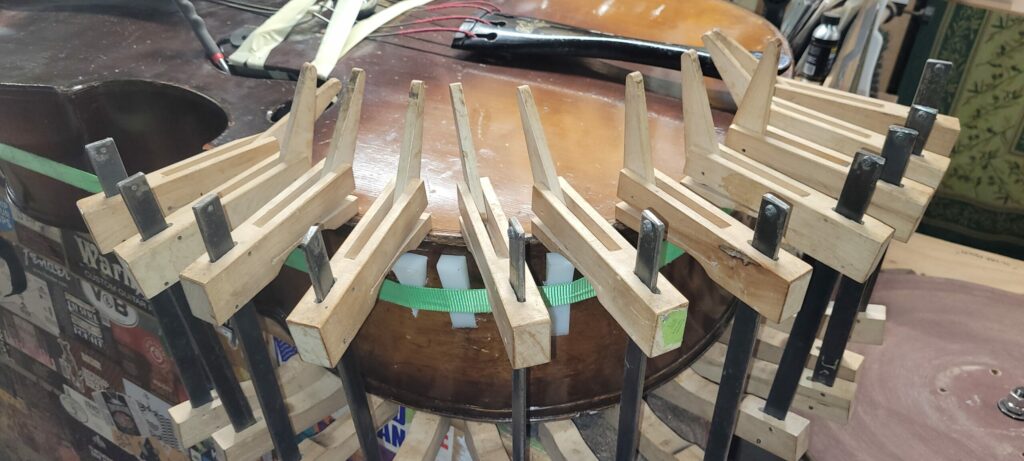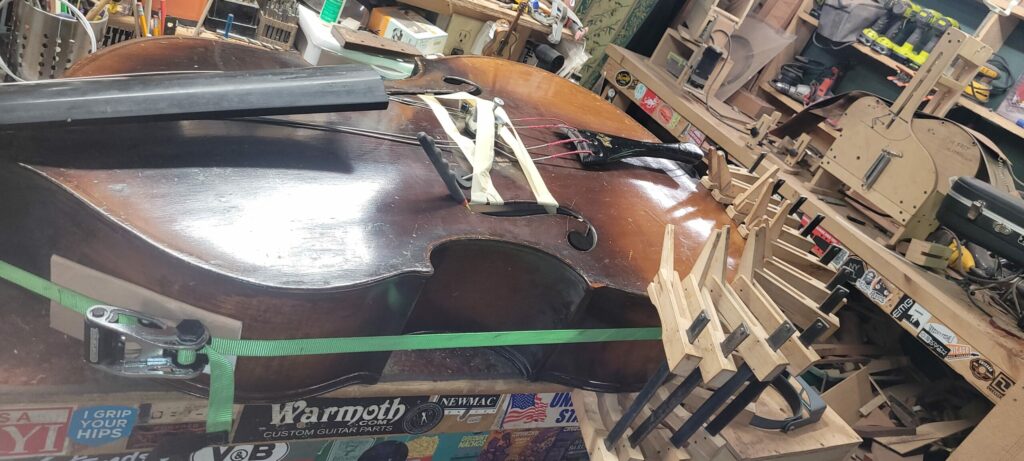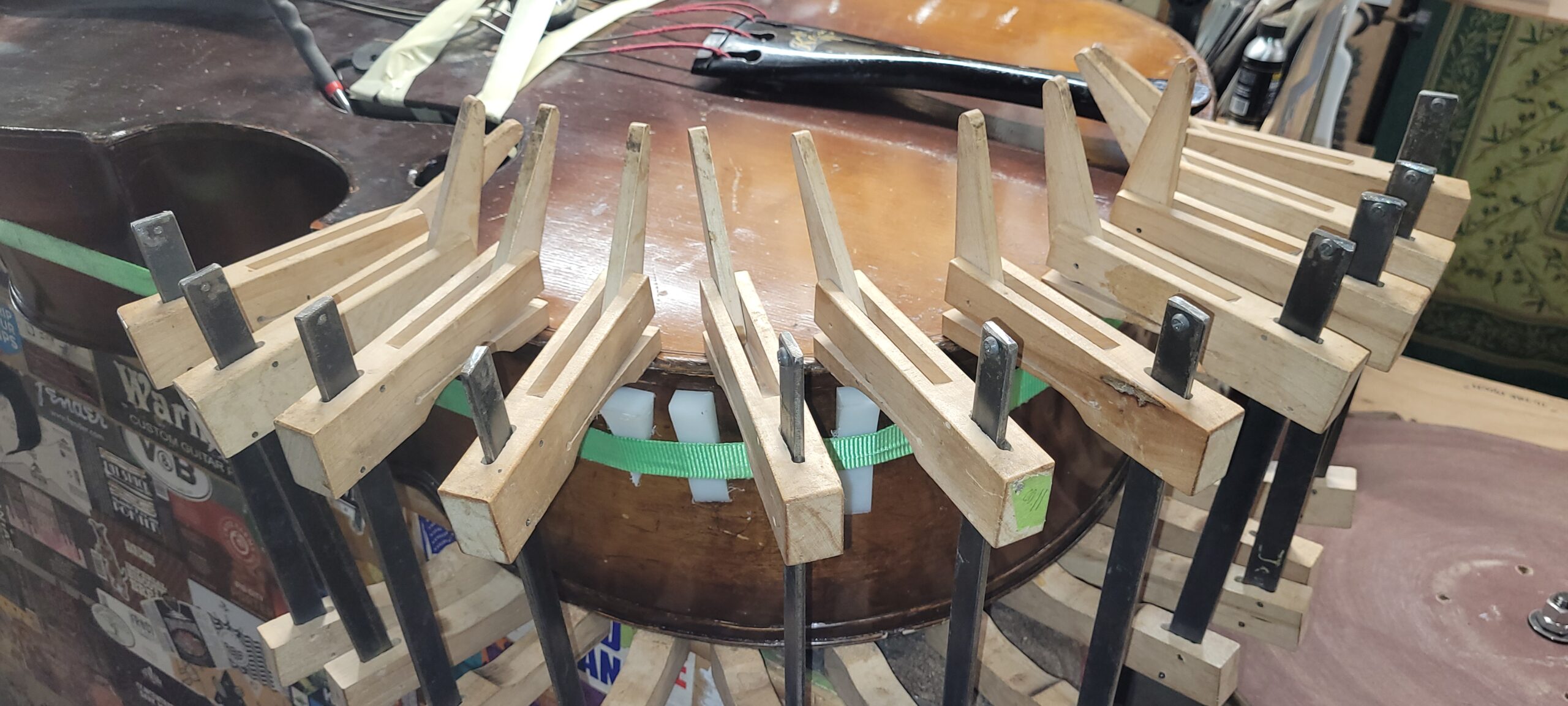When you see us performing, you’re hearing not just the music but the stories behind the instruments we play. Every instrument carries its own history — and sometimes, they need a little expert care to keep making music.
Last week I visited Tracy Cox’s studio in Parishville to pick up three instruments he’d been working on for us: a domra prima, a violin (on behalf of a friend), and a 1920s Kay upright bass that belonged to my father. Tracy is a master luthier — known for his beautiful custom inlay work, his handcrafted guitars, and his ability to breathe new life into instruments of all kinds. We’ve brought him everything from guitars to violins to basses, and he’s never let us down.
Walking into Tracy’s workshop feels a little like stepping into another world. Nestled in the woods, his studio smells of spruce and varnish, with music playing softly in the background. And often his most dedicated little assistant — his two-year-old daughter — is there to lend a hand.
The bass had developed a seam separation along the side — one of those classic old-instrument issues that happens with changes in temperature and humidity. Tracy carefully clamped it back into place using an impressive collection of clamps, ratchet straps, and wedges (the wedges, cleverly, are repurposed materials from Sunfeather Soaps, also right there in Parishville). Once the seam was secure, he reset the sound post — a finicky job that requires both precision and patience. After a century, this old bass is still going strong, and you just might hear it on stage with us.


The domra, too, has its own journey. I bought it in St. Petersburg, Russia, while studying abroad during law school. After attending a breathtaking concert of traditional Russian domras and balalaikas, a friend took me straight to a local music shop to bring one home. The domra has three strings, tuned E-A-D, and is usually strung with metal strings — but thanks to a tip from a professional domra player I met at the Montmagny accordion festival, mine now sports electric guitar strings, which sound great and are easy to find. Recently, the domra’s neck had begun to separate slightly from the body — high string tension will do that over time — but Tracy quickly had it repaired and looking as good as new.
Caring for instruments is a big part of being working musicians — whether it’s a fiddle, an accordion, a bass, or a little Russian domra, they all need attention from time to time. We’re lucky to have someone like Tracy nearby, who helps keep our growing collection of instruments in top shape, ready for the next performance.
Every instrument you see us play has a story like this behind it — and we love sharing both the music and the stories with you.

Leave a Reply